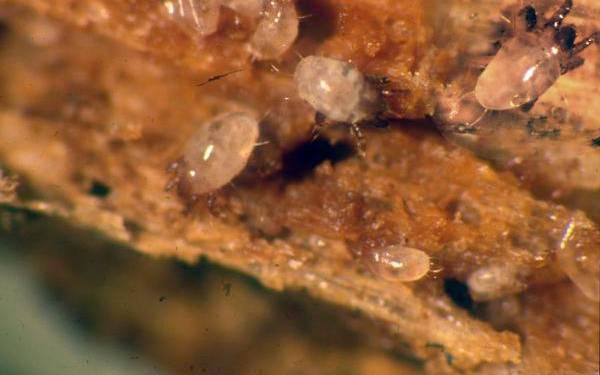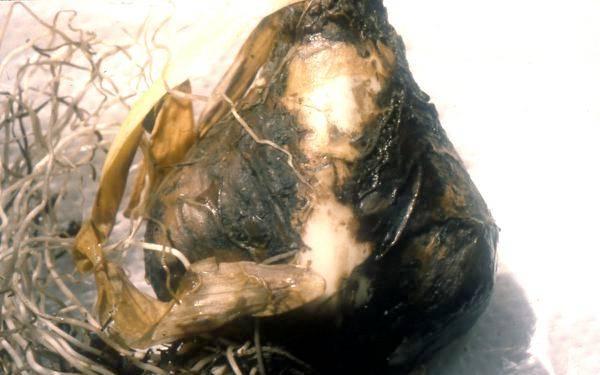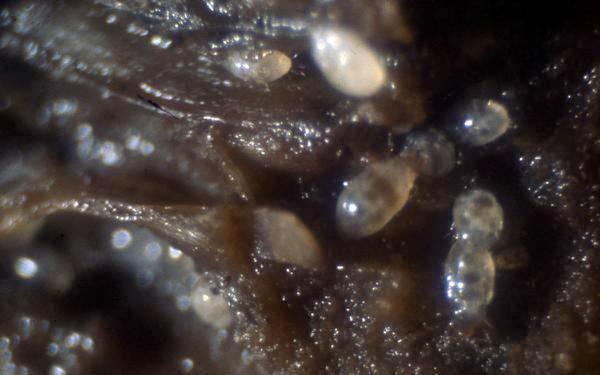Bulb mites feed on a variety of flowering plants including crocus, tuberose, lily, hyacinth, tulip, gladiolus, freesia, Dutch iris, and narcissus. The adult mites are 0.5 to 1mm long and have eight legs. They are oval in shape and white to translucent with 2 brown spots on the body. The mites may be abundant on rotting bulbs and decaying plant material. The mites also burrow into healthy bulbs and carry bacteria and pathogenic fungi that cause rots. Symptoms of bulb mite infestations include stunting or off-color with low populations to failure of bulbs to produce new growth with heavy infestations. Feeding sites provide entry points for pathogenic fungi such as Rhizoctonia, Pythium, and Fusarium. The mites may also feed in the stems of lilies causing the stems to become brittle.

Bulb mites in n infested Easter lily stem. Photo credit: J. R. Baker, NC State University

Photo by J. R. Baker, NC State University

Photo by J. R. Baker, NC State University
Management
Dispose of rotting or soft bulbs that are infested with the mites. Predaceous mites in the soil feed on bulb mites.
Additional resource
Bulb mites | NC State Extension